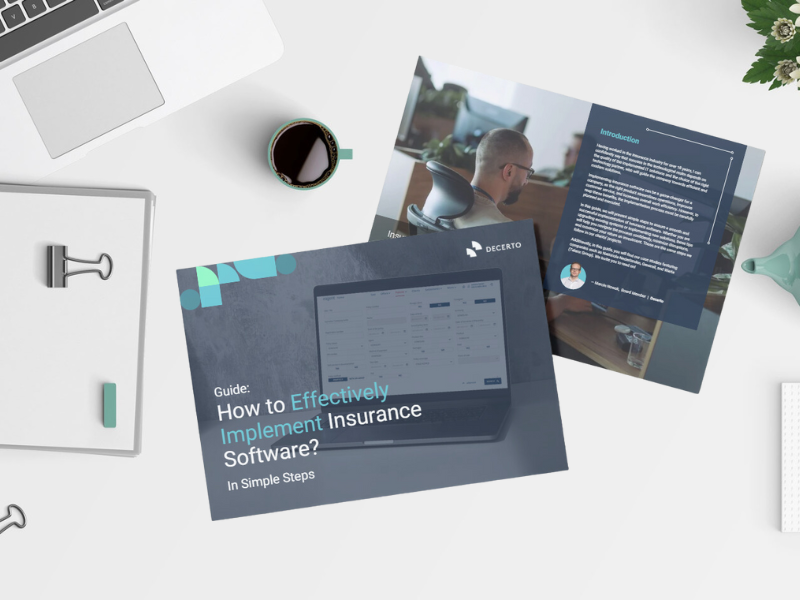Agent portals have evolved from simple document repositories into the cornerstone of efficient insurance distribution. Today, more insurers are investing heavily in these platforms to streamline collaboration with agents, enhance operational efficiency, and meet rising customer expectations.
But not all portals are created equal. In a digital-first world, an agent portal isn’t just a nice-to-have tool - it is the command center for modern agencies. Whether you are a carrier looking to empower your network or an agency aiming to scale, understanding the anatomy of a high-performance portal is essential.
What Is an Insurance Agent Portal?
At its core, an insurance agent portal is a secure, web-based workspace designed specifically for insurance agents and brokers. It serves as a digital "central hub" that consolidates tools, resources, and data into one user-friendly interface.
Instead of juggling multiple logins and disconnected systems, an agent portal provides unified access to:
- Quotes and Policy Management: Instant generation of quotes and full lifecycle management of policies.
- Underwriting Process Updates: Real-time status tracking of risk assessments.
- Claims Management: Visibility into claim statuses to keep clients informed.
- Commissions and Training: Transparent tracking of earnings and access to educational resources.
A modern portal replaces the need for disjointed systems, effectively functioning as a comprehensive Insurance CRM and agency management system. It improves communication, accelerates sales processes, and ensures that agents can manage everything from policy renewal to customer interactions in one place.
The "Old Way" vs. The Digital Command Center
Many insurance companies - even large, established ones - still rely on manual processes involving emails, spreadsheets, phone calls, or disconnected legacy systems. While familiar to some, these outdated workflows create friction, delays, and compliance risks.
The Problem: Disconnected Information
In a manual environment, agents often work blindly. On average, organizations today manage around 400 different data sources. When this data is not consolidated, agents waste time manually updating CRM systems, calculating commissions, or waiting days for underwriter responses via email. This leads to:
- Higher risk of human error.
- Slower client response times (killing conversion rates).
- Limited sales tracking and oversight.
- Operational confusion.
The Solution: The Portal as a Command Center
A modern agent portal solves these issues by centralizing all key tasks. It acts as a bridge between the agent and the carrier's core systems.
- Real-Life Scenario: Instead of emailing an underwriter about a client with a non-standard credit history and waiting two days for a reply, an agent logs into the portal. They enter the data and receive an automated risk assessment based on integrated underwriting rules. Within minutes - not days - the agent presents a binding offer, generates documents, and initiates the digital signature process.
Key Features of a High-Performance Agent Portal
To truly supercharge productivity, a portal must go beyond basic functionality. Here are the "must-have" features that define a competitive insurance agent software solution in today's market.
1. Integrated Customer Relationship Management (CRM)
An agency’s success is built on relationships. A portal with built-in Insurance CRM capabilities consolidates client data, recording interactions and supporting personalized communication.
- Data Consolidation: By centralizing previous claims history, policy details, and communication logs, agents get a 360-degree view of the client. This reduces data entry errors and ensures consistency.
- Personalization is Key: A McKinsey report reveals that 71% of consumers expect personalization, and 76% express frustration when it doesn’t happen. Furthermore, Salesforce studies indicate that 66% of customers have switched providers due to poor personalization. A robust portal allows agents to tailor their communication, deepening client loyalty.
2. Advanced Policy Management & Auto-Renewals
Managing the policy lifecycle manually is a drain on resources. Modern portals introduce automation to handle the heavy lifting.
- Auto-Renewals: Automation ensures policies are renewed on time without human intervention. With a significant percentage of customers preferring auto-renewals for convenience, this feature reduces churn and ensures continuous coverage.
- Document Management: Accessible, cloud-based storage with permission controls and version tracking ensures agents always use the latest forms. This eliminates the risk of using outdated compliance documents.
3. Seamless Underwriting Integration
Integration is the backbone of efficiency. Underwriting integration within the portal allows for:
- Instant Gratification: Agents can generate quotes using current products and rates immediately.
- Reduced Friction: By automating rule-based decision-making, carriers reduce the workload on their back-office underwriting teams while agents get answers faster.
4. Robust Security and Compliance
As the industry digitizes, the threat landscape grows. The global cybersecurity insurance market is projected to reach nearly $79 billion by 2033. Trust is paramount, and a portal must be a fortress for sensitive data.
- Multi-Factor Authentication (MFA): Research suggests MFA can block up to 99% of automated cyberattacks. It acts as a shield, ensuring only authorized personnel access sensitive financial and personal data.
- Data Encryption: With 73% of business cyber insurance claims relating to data breaches, robust encryption is non-negotiable.
- Automated Compliance: Built-in mechanisms help ensure adherence to local regulations (across multi-jurisdictional environments in the US), track agent activity history, and simplify audits.
Why Agent Portals Are Essential for Business Growth
Beyond features, the strategic value of an agent portal is measurable in growth and retention.
- Enhancing Agent Experience: A satisfied agent is a productive agent. Self-service tools enable agents to manage quotes and documents independently. This reduces wait times and builds loyalty to the insurer's brand.
- Speeding Up the Sales Process: Features like real-time premium calculators and instant policy issuance shorten the decision-making process. In the US market, where consumers shop around quickly, speed is often the deciding factor.
- Data-Driven Decisions: Built-in reporting and analytics empower carriers to identify effective sales channels and high-potential products.
- Seamless Scaling: As an insurer expands geographically, portals make it easy to onboard new agents and maintain brand consistency. Centralized tools support rapid growth without operational chaos.
Market Insights: The Future is Digital
The insurance distribution technology market in the U.S. is booming, valued at $20.44 billion in 2023 and expected to grow to $50.70 billion by 2029 (CAGR: 16.4%).
In this expanding market, platforms like the Agent Portal by Decerto are setting the standard. Decerto offers a modern, responsive platform purpose-built for streamlining insurance distribution.
- Self-Service First: Decerto’s architecture allows for on-the-fly policy generation and coverage modification, empowering agents to work independently.
- Advanced Analytics: Through simple dashboards, agents can track their sales pipeline, commission status, and goal monitoring in real-time.
- API-First Architecture: It integrates seamlessly with both legacy systems and modern third-party tools (like e-signatures or external CRMs), ensuring data flows without interruption.
- Security & Compliance: With role-based access control, digital signing, and automated activity logging, it is built for the rigorous regulatory demands of the US market.
Conclusion
The agent portal is more than just a digital tool—it is the strategic foundation for today’s insurance distribution. It speeds up sales, improves service quality via personalization, ensures rigorous compliance, and enables scalable growth.
In a digital-first world, relying on manual workflows is a liability. Insurance companies that invest in integrated, next-gen portals like those offered by Decerto gain faster distribution channels, stronger agent relationships, and a competitive edge. It isn’t just a "nice-to-have"—it’s a must-have for insurers that want to lead in the modern era.
Download our guide about Agent Portal:

Frequently Asked Questions (FAQ)
What is an insurance agent portal?
An insurance agent portal is a secure, web-based platform that serves as a central workspace for agents. It integrates tools for quoting, policy management, claims processing, and customer relationship management (CRM), allowing agents to handle their daily tasks efficiently from a single interface.
How does an agent portal improve the sales process?
Agent portals accelerate sales by providing real-time access to underwriting rules and premium calculators. This allows agents to generate quotes, assess risks, and bind policies in minutes rather than days, significantly increasing conversion rates and customer satisfaction.
Why is CRM integration important in insurance software?
CRM integration is crucial because it consolidates client data from multiple sources into one view. This allows agents to offer personalized experiences, track interaction history, and manage renewals effectively. Statistics show that personalization significantly reduces client churn and increases loyalty.
Is an agent portal secure?
Yes, modern agent portals prioritize security. Key features include Multi-Factor Authentication (MFA), which can block 99% of unauthorized access attempts, and advanced data encryption to protect sensitive client information and financial records in compliance with regulations.
Can an agent portal integrate with legacy systems?
Leading solutions, such as the Agent Portal by Decerto, feature an API-first architecture. This allows them to seamlessly connect with an insurer's existing legacy core systems as well as modern third-party applications like accounting software or digital signature platforms.






.avif)
